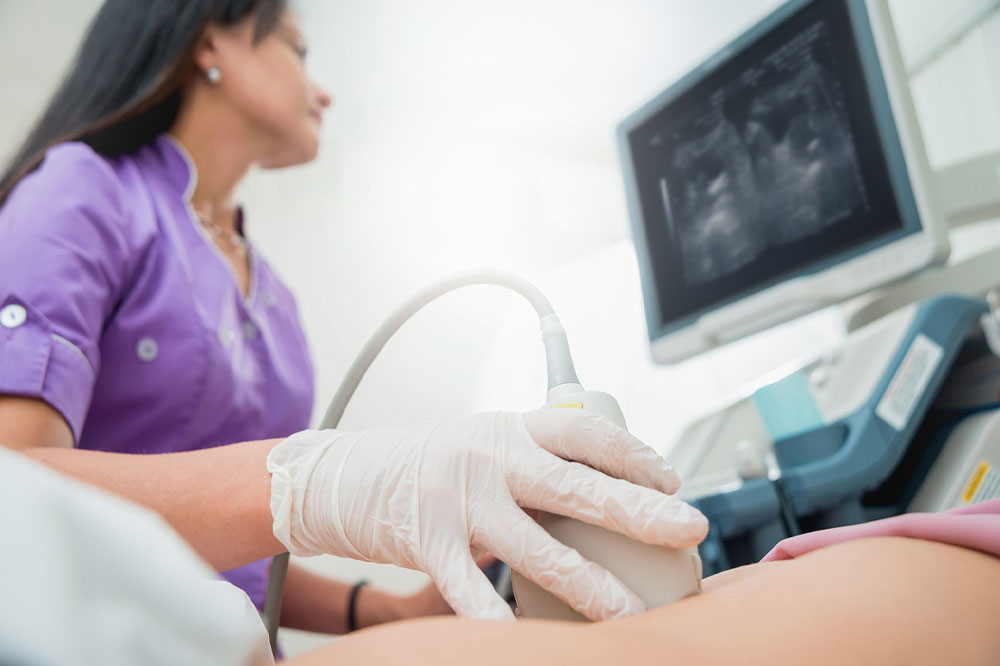
Echocardiography test – Purpose, types, and procedure explained
An echocardiography is a test that employs sound waves to produce live images of the heart, known as echocardiograms. It checks the function and structure of the heart and helps diagnose a range of conditions, such as valve disease and cardiomyopathy. Echocardiograms can also gain information about blood clots in the chambers and pressure in the heart. There are various types of echocardiography tests, some of which include transesophageal and transthoracic echocardiography.
Who needs an echocardiography?
This test is recommended for anyone with an existing or suspected heart condition. It allows healthcare providers to look at the heart, check its structure, and inspect if it functions correctly. It also helps doctors ascertain the thickness of the heart walls and the organ’s pumping strength. Moreover, echocardiograms aid the doctor in finding major heart issues, such as holes between the heart chambers.
What are the types of echocardiography?
In most cases, the doctor will suggest the type of echocardiogram one might need. These might include:
Transthoracic echocardiography
It is one of the most common types. In this test, a device called the transducer is placed on the patient’s chest, which sends ultrasound waves through the chest and toward the heart. As the sound waves bounce back to the transducer, a computer interprets them to produce live images on a monitor. This test is entirely pain-free and non-invasive. Moreover, it does not require preparation or recovery time.
Transesophageal echocardiography
A transesophageal echocardiography test is suggested if the doctor requires more detailed images. During this procedure, the doctor guides a small transducer down the patient’s throat toward the heart. It is done after numbing the throat to eliminate the gag reflex. Once the transducer reaches behind the heart, it provides a clear image of any existing problems in the organ. It visualizes the chambers of the heart that are not visible during transthoracic echocardiography. To prepare for the test, the health practitioner might ask the patient to avoid drinking anything for eight hours before the scheduled time.
Stress echocardiography
Here, the doctor takes specific images of the heart before and after the patient exercises. It allows them to test how the organ performs under stress. It also shows any signs of high blood pressure or heart failure. To conduct the procedure, the expert attaches patches to the patient’s chest, which are connected to the echocardiogram machine. Then, the patient is asked to adjust the pacemaker (if they have one) or exercise on a stationary bicycle or treadmill. Afterward, the data is collected at intervals to see how the heart responds.
Three-dimensional echocardiography
A three-dimensional (3D) echocardiogram uses either transthoracic or transesophageal echocardiograms to create 3D images of the heart by taking multiple images from different angles. Usually, 3D echocardiograms are used before a heart valve surgery or to diagnose heart problems in young children. The patient might be administered a contrast agent during the scan for clearer pictures.
Fetal echocardiography
As the name suggests, fetal echocardiography tests are used for expectant mothers between the 18th to 22nd week of pregnancy. In this procedure, the transducer is placed over the mother’s abdomen to check for heart problems in the fetus. As the test does not use radiation, it is considered safe for the unborn child.
What happens during an echocardiography test?
In most cases, the test lasts up to an hour and may be performed in a hospital or the doctor’s office. As a part of the procedure, electrodes are attached to the patient’s body, and the transducer device is moved in a back-and-forth motion on the chest. The patient might also be asked to breathe a certain way for the best results.
The steps for a transesophageal echocardiography test are different. Unlike the other types, the doctor numbs the patient’s neck. A stress echocardiography test is similar to a transthoracic test, except that the stress test takes pictures before and after performing an exercise. Usually, the exercise may last anywhere between six to ten minutes but may vary according to the fitness level and tolerance of the patient.
Echocardiography tests can analyze the heart’s performance and even highlight problems. In most cases, the procedure is non-invasive, but the doctor might administer a contrast dye for better clarity. Since echocardiograms are one of the most effective ways to provide accurate information about the heart, one should opt for them as a part of their yearly checkup after consulting a doctor. It helps with the timely diagnosis of any existing condition and helps determine a treatment plan.




